A Genetic Mechanism for Chemical Compaction in Mudstones: Case Study from the Xihu Depression, East China Sea Shelf Basin
Abstract
1. Introduction
2. Geological Setting
3. Methods
3.1. Logging Curves
3.2. Scanning Electron Microscope (SEM)
3.3. X-ray Diffraction (XRD)
4. Results
4.1. Logging Characteristics of Mudstones
4.2. Whole-Rock Mineralogy
4.3. Clay Mineral Characteristics
5. Discussion
5.1. Chemical Compaction
5.2. Clay Mineral Transformation
- Illitization. Illitization of I/S and kaolinite is the most important transformation process in the diagenetic process of clay minerals, which are usually illite and SiO2. The simplified reaction equation is [52]:
- Quartz. Reaction Equations (3) and (4) show that the illitization process occurs in a relatively closed diagenetic system, and the resulting SiO2 rapidly reaches the supersaturated state [56]. The saturated solution of high concentration SiO2 and the quartz’s slow growth lead to quartz crystals’ rapid precipitation and the rapid increase in content at the temperature of 60–80 °C [52]. However, the illitization of the multi-stage I/S mixed layer and the illitization of some kaolinite do not cause significant changes in quartz content at 90–145 °C (Figure 9). Figure 10 shows that the quartz content of Well D decreases in the range of 80–105 °C. This phenomenon is explained as follows: (1) no large-scale illitization of clay minerals within this temperature range, and the illite content does not change, so the SiO2 concentration is not controlled by the illitization process (Figure 10). (2) the diagenetic environment is relatively open, the saturated solution of high concentration SiO2 quickly migrates to the adjacent sandstone, and the quartz content does not change significantly (Figure 9). (3) The stratigraphic unit is a diagenetic environment with frequent acid-alkaline interaction [36,57]. The precipitation rate of SiO2 is almost the same as the dissolution rate. The dissolved Si4+ combines with OH− to form chlorite (Figure 9 and Figure 10 [58]). Si4+ combines with K+ to form K-feldspar (Figure 11D,F [59]), resulting in no significant change or decreasing trend in the overall content of quartz (Figure 9 and Figure 10). In other words, quartz cementation during illitization reaction is a pore failure mechanism and non-pore protection mechanism [60].
- Chlorite. Two different dissolution precipitation mechanisms for the formation of chlorite. The first is the dissolution-precipitation mechanism of pyrite and plagioclase. Pyrite and plagioclase are dissolved in an acidic environment to provide cations such as Fe2+ and Al3+ at temperatures exceeding 120 °C, which combine with OH− in pore fluid to form chlorite (Figure 9 [61]). The second is the dissolution-precipitation mechanism of the I/S mixed layer. I/S mixed layer is dissolved and combined with Fe2+, Mg2+, Si4+, Al3+, and OH− in pore fluid to form chlorite-smectite (C/S) mixed layer intermediate product, and then transformed into chlorite (Figure 10 [58]). Well A shows that the chlorite content increases after 125 °C, accompanied by a decreasing trend of I/S (Figure 9).
- Plagioclase. The formation mechanism of plagioclase is mainly the diagenetic transformation of smectite [62], kaolinite [63,64], and chlorite [50]. Well D shows that the increase in plagioclase content is accompanied by decreased kaolinite and chlorite contents in the range of 75–100 °C (Figure 10). In the same temperature range, the content of plagioclase in Well A has no relationship with the content of kaolinite and chlorite, showing a consistent decrease among the three (Figure 9). Another genesis of plagioclase in Well D might be in situ neogenesis under the supply conditions of specific external sources, which are related to the relevant background of deep fault development and deep fluid activity [50,65,66,67,68]. Deep and large fault activities lead to fracture intrusion or eruption of deep fluids along faults and fractures. The deep fluids passing through matrix pores are rich in Si4+, Al3+, Mg2+, and Na+, and the substances from the high-temperature and high-pressure environment of crust and mantle precipitate in the diagenetic stage, including albite, kaolinite, chlorite, dolomite and calcite recrystallization and pyrite combination (Figure 11B,C).
- Dolomite and ankerite. Dolomite precipitation generally occurs after calcite dissolution-precipitation and pyrite dissolution, which is mainly controlled by the pore water Mg2+/Ca2+ ratio [67]. Calcite dissolution-precipitation and partial pyrite dissolution occurred during the diagenetic period at 125 °C, thus forming dolomite and causing ankerite precipitation (Figure 9 and Figure 10). The deepening of burial depth and increase in temperature further promote the recrystallization of dolomite and form a more stable carbonate diagenetic facies (Figure 9 [67]). Meanwhile, Mg2+ is released into pore water, accelerating the formation of late chlorite minerals (Figure 9 and Figure 10 [50]).
- Pyrite. Pyrite occurs at about 70 °C, an early diagenetic product, and the diagenesis time is slightly later than or synchronous with the early calcite precipitation [68]. The anaerobic oxidation of organic matter in mudstones reduces sulfate in pore water, releases H2S and S, and combines with Fe2+ to form pyrite in this stage [69]. During subsequent diagenesis at 70–105 °C and 120–135 °C, pyrite is dissolved, Fe2+ is consumed to form an I/S mixed layer, and the released S2− accelerated calcite dissolution (Figure 9). Chlorite dissolution or local sulfate thermochemical reduction reaction occurs at 135 °C (Figure 9 [70]), part of Fe2+ is released, pyrite is crystallized, and the content is increased (Figure 9 and Figure 10). The subsequent charging of organic acid causes the dissolution of pyrite in local intervals to form dissolution pores (Figure 11B,C), resulting in abnormal enlargement of pores after chemical compaction (Figure 9 and Figure 10).
- Calcite. Calcite precipitation occurs before diagenetic replacement other than pyrite crystal precipitation and early glass argillization [50]. With the dissolution of early calcite, mudstone pores have been locally increased intervals under the background of mechanical and chemical compaction. In Hg2 Fm interval, where the content of early calcite disappears, it is further found that natural gas is locally enriched in this interval [49]. The second diagenetic calcite is formed in the later stage of diagenesis (100–125 °C) after CO2 release and the combination of methane produced by organic matter of source rock and dissolved calcium (Figure 9 and Figure 10 [51]). The source of Ca2+ is mainly plagioclase dissolution in the temperature range of 105–120 °C, followed by calcite precipitation (Figure 10). Carbonate precipitation with chemical compaction is the main cause of the reduction of pores.
5.3. Temperature Distribution
- The multi-stage rock mass development in Mesozoic, Oligocene, and Miocene has built a solid material foundation for the deep fluids in the East China Sea Shelf Basin, which can provide different scale material sources for the deep fluid activities in different regions and multi-stage development. Rock mass gradually changed from west to east during the formation period, along with the deep fault activity. Given this, it can be seen that the deep fluids in the Xihu Depression are mainly Mesozoic magma, which intrudes or erupts upward along the deep fault (Figure 13).
- Deep and large faults have been active frequently since the Oligocene (Figure 13). The increase or change of regional stress intensifies the intensity of deep magmatism. Since the Cenozoic, magmatism has mainly developed three main activity periods: early Himalayan (Paleocene–Eocene), middle Himalayan (Oligocene–Miocene), and late Himalayan (Pliocene–quaternary). The East China Sea Shelf Basin has formed an eruption model of intrusive and volcanic rocks dominated by intermediate acid rocks [65,72].
5.4. Compaction Stage and Model
5.5. Indicative Significance of Chemical Compaction
6. Conclusions
Author Contributions
Funding
Data Availability Statement
Acknowledgments
Conflicts of Interest
References
- Zadeh, M.K.; Mondol, N.H.; Jahren, J. Experimental mechanical compaction of sands and sand-clay mixtures: A study to investigate evolution of rock properties with full control on mineralogy and rock texture. Geophys. Prospect. 2016, 64, 915–941. [Google Scholar] [CrossRef]
- Bjørlykke, K. Clay mineral diagenesis in sedimentary basins e a key to the prediction of rock properties: Examples from the North Sea Basin. Clay Miner. 1998, 33, 15–34. [Google Scholar] [CrossRef]
- Dutta, N.C. Effect of chemical diagenesis on pore pressure in argillaceous sediment. Lead. Edge 2016, 35, 523–527. [Google Scholar] [CrossRef]
- Marcussen, Ø.; Thyberg, B.I.; Peltonen, C.; Jahren, J.; Bjørlykke, K.; Faleide, J.I. Physical properties of Cenozoic mudstones from the northern North Sea: Impact of clay mineralogy on compaction trends. AAPG Bull. 2009, 93, 127–150. [Google Scholar] [CrossRef]
- Luo, X.R.; Zhang, L.K.; Lei, Y.H.; Yang, W. Petroleum migration and accumulation: Modeling and applications. AAPG Bull. 2020, 104, 2247–2265. [Google Scholar] [CrossRef]
- Zhao, J.Z.; Li, J.; Xu, Z.Y. Advances in the origin of overpressures in sedimentary basins. Acta Pet. Sin. 2017, 38, 973–998. [Google Scholar] [CrossRef]
- Li, J.; Zhao, J.Z.; Hou, Z.Q.; Zhang, S.P.; Chen, M.N. Origins of overpressure in the central Xihu depression of the East China Sea shelf basin. AAPG Bull. 2021, 105, 1627–1659. [Google Scholar] [CrossRef]
- Ewy, R.; Dirkzwager, J.; Bovberg, C. Claystone porosity and mechanical behavior vs. geologic burial stress. Mar. Pet. Geol. 2020, 121, 104563. [Google Scholar] [CrossRef]
- Issler, D.R. A new approach to shale compaction and stratigraphic restoration, Beaufort-Mackenzie Basin and Mackenzie Corridor, northern Canada. AAPG Bull. 1992, 76, 1170–1189. [Google Scholar]
- Kalani, M.; Zadeh, M.K.; Jahren, J.; Mondol, N.H.; Faleide, J.I. Effect of diagenesis on pore pressures in fine-grained rocks in the Egersund Basin, Central North Sea. Nor. J. Geol. 2015, 95, 171–189. [Google Scholar] [CrossRef][Green Version]
- Fan, C.Y.; Wang, G. The significance of a piecemeal geometric model of mudstone compaction: Pinghu Slope, Xihu Depression, Eastern China. Mar. Pet. Geol. 2021, 131, 105138. [Google Scholar] [CrossRef]
- Mondol, N.H.; Bjørlykke, K.; Jahren, J.; Høeg, K. Experimental mechanical compaction of clay mineral aggregates-changes in physical properties of mudstones during burial. Mar. Pet. Geol. 2007, 24, 289–311. [Google Scholar] [CrossRef]
- Mondol, N.H. Porosity and Permeability Development in Mechanically Compacted Silt-Kaolinite Mixtures. In Proceedings of the SEG Houston 2009 International Exposition and Annual Meeting, Houston, TX, USA, 25–30 October 2009; pp. 2139–2143. [Google Scholar]
- Li, S.J.; Jin, Z.J.; Yuan, Y.S.; Zhou, Y.; Sun, D.S. Triaxial stress experiment of mudstone under simulated geological conditions and its petroleum significance. Oil Gas Geol. 2016, 37, 598–605. [Google Scholar]
- Bjorkum, P.A.; Nadeau, P.H. Temperature controlled porosity/permeability reduction, fluid migration, and petroleum exploration in sedimentary basins. APPEA J. 1998, 38, 453–464. [Google Scholar] [CrossRef]
- Ogebulea, O.Y.; Jahrena, J.; Mondol, N.H. Compaction, rock physics and rock properties of sandstones of the Stø Formation: Case study of five wells from the south-western Barents Sea, Norway. Mar. Pet. Geol. 2020, 119, 104448. [Google Scholar] [CrossRef]
- Aldega, L.; Carminati, E.; Scharf, A.; Mattern, F. Thermal maturity of the Hawasina units and origin of the Batinah Mélange (Oman Mountains): Insights from clay minerals. Mar. Pet. Geol. 2021, 133, 105316. [Google Scholar] [CrossRef]
- Bjørlykke, K.; Høeg, K. Effects of burial diagenesis on stress, compaction and fluid flow in sedimentary basins. Mar. Pet. Geol. 1997, 14, 267–276. [Google Scholar] [CrossRef]
- Lahann, R. Impact of smectite diagenesis on compaction modelling and compaction equilibrium. In Pressure Regimes in Sedimentary Basins and Their Prediction; Huffman, A.R., Bowers, G.L., Eds.; AAPG Memoir: Tulsa, OK, USA, 2002; Volume 76, pp. 61–72. [Google Scholar]
- Dutta, N.C. Deepwater geohazard prediction using prestack inversion of large offset P-wave data and rock model. Lead. Edge 2002, 21, 193–198. [Google Scholar] [CrossRef]
- Goulty, N.R.; Sargent, C.; Andras, P.; Aplin, A.C. Compaction of diagenetically altered mudstones e Part 1: Mechanical and chemical contributions. Mar. Pet. Geol. 2016, 77, 703–713. [Google Scholar] [CrossRef]
- Chen, H.L.; Wang, Z.L. A study of mudstone compaction in the west margin of Shaanxi-Gansu-Ningxia Basin. Oil Gas Geol. 1992, 13, 263–271. [Google Scholar]
- Colten-bradley, V.A. Role of pressure in smectite dehydration-effects on geopressure and smectite-to-illite transformation. AAPG Bull. 1987, 71, 1414–1427. [Google Scholar]
- Zhang, Z.X.; Yang, J.; Ou, Q.B.; Zhang, Y.C.; Qu, X.M.; Guo, Y.F. Formation Pressure Estimation Method for High Temperature and High Pressure Wells in Ledong Area of South China Sea. Nat. Resour. Res. 2021, 30, 4807–4824. [Google Scholar] [CrossRef]
- Johnson, J.R.; Hansen, J.A.; Rahman Jamilur, M.D.; Renard, F.; Mondol, N.H. Mapping the maturity of organic-rich shale with combined geochemical and geophysical data, Draupne Formation, Norwegian Continental Shelf. Mar. Pet. Geol. 2022, 138, 105525. [Google Scholar] [CrossRef]
- Balestra, M.; Corrado, S.; Aldega, L.; Gasparo Morticelli, M.; Sulli, A.; Rudkiewicz, J.-L.; Sassi, W. Thermal and structural modeling of the Scillato wedge-top basin source-to-sink system: Insights into the Sicilian fold-and-thrust belt evolution (Italy). Geol. Soc. Am. Bull. 2019, 131, 1763–1782. [Google Scholar] [CrossRef]
- Schito, A.; Andreucci, B.; Aldega, L.; Corrado, S.; Di Paolo, L.; Zattin, M.; Szaniawski, R.; Jankowski, L.; Mazzoli, S. Burial and exhumation of the western border of the Ukrainian Shield (Podolia): A multi-disciplinary approach. Basin Res. 2018, 30, 532–549. [Google Scholar] [CrossRef]
- Lahann, R.W.; Swarbrick, R.E. Overpressure generation by load transfer following shale framework weakening due to smectite diagenesis. Geofluids 2011, 11, 362–375. [Google Scholar] [CrossRef]
- Xu, C.J.; Ye, J.R.; Liu, J.S.; Cao, Q.; Sheng, Y.Y.; Yu, H.W. Simulation of hydrocarbon generation and expulsion for the dark mudstone with Type-III kerogen in the Pinghu Formation of Xihu Sag in East China Sea Shelf Basin. Oil Gas Geol. 2020, 41, 359–366. [Google Scholar]
- Zhao, Z.L.; Zhao, J.Z.; Zhao, H.; Wang, J.; Er, C.; Wang, S.X.; Li, Z. Re-evaluation of the genetic mechanism of overpressure: Western slope zone of the Xihu Depression, East China Sea Shelf Basin. Mar. Pet. Geol. 2024, 160, 106599. [Google Scholar] [CrossRef]
- Duan, F.F.; Zhang, H.S.; Qiu, K.; Wang, X.S.; Wang, H.M. Study on the mechanism of abnormal pressure and pressure detection method after drilling for Xihu Depression in the East China sea. Offshore Oil 2016, 36, 42–47. [Google Scholar]
- Shen, Y.L.; Qin, Y.; Guo, Y.H.; Zhao, Z.G.; Yuan, X.X.; Qu, Z.H.; Xie, G.L. Development characteristics of coal-measure source rocks divided on the basis of Milankovich coal accumulation cycle in Pinghu Formation, Xihu sag. Acta Pet. Sin. 2016, 37, 706–714. [Google Scholar]
- Liu, J.S.; Cao, B.; Xu, Z.X.; Qin, L.Z.; Xu, F.H.; Tang, J.C. Sedimentary facies and the characteristics of tight sandstone reservoirs of Huagang Formation in Xihu Depression, East China Sea Basin. J. Chengdu Univ. Technol. 2012, 39, 130–136. [Google Scholar]
- Zhu, Y.X.; Huang, D.W.; Wang, H.; He, X.K.; Shi, Y.; She, Y.M. Sedimentary setting of thick sandstone in the 3rd member of the Oligocene Huagang Formation in A gas field in the Xihu Sag, East China Sea Basin. Oil Gas Geol. 2019, 40, 1226–1235. [Google Scholar]
- Lian, X.C. A model of hydrocarbon accumulation in deeply buried low permeability-high density sandstone gas reservoirs in Xihu Sag, east China sea. Mar. Geol. Front. 2018, 34, 23–30. [Google Scholar]
- Zhang, J.Y.; Lu, Y.C.; Krijgsman, W.; Liu, J.S.; Li, X.Q.; Du, X.B.; Wang, C.; Liu, X.C.; Feng, L.; Wei, W.; et al. Source to sink transport in the Oligocene Huagang Formation of the Xihu Depression, East China Sea Shelf Basin. Mar. Pet. Geol. 2018, 98, 733–745. [Google Scholar] [CrossRef]
- Zhou, L.H.; Han, G.M.; Dong, Y.Q.; Shi, Q.R.; Ma, J.Y.; Hu, J.N.; Ren, S.C.; Zhou, K.J.; Wang, J.C.; Si, W.L. Fault-sand combination modes and hydrocarbon accumulation in Binhai fault nose of Qikou Sag, Bohai Bay Basin, East China. Pet. Explor. Dev. 2019, 46, 869–882. [Google Scholar] [CrossRef]
- Wyllie, M.R.J.; Gregory, A.R.; Gardner, L.W. Elastic wave velocities in heterogeneous and porous media. Geophys. XXI 1956, 21, 41–70. [Google Scholar] [CrossRef]
- Dasgupta, S.; Chatterjee, R.; Mohanty, S.P. Magnitude, mechanisms, and prediction of abnormal pore pressure using well data in the Krishna-Godavari Basin, east coast of India. AAPG Bull. 2016, 100, 1833–1855. [Google Scholar] [CrossRef]
- Li, L. The method for purifying clay minerals of sedimentary rocks. Sci. Geol. Sin. 1982, 1, 117–120. [Google Scholar]
- Gan, Z.Y.; Li, W.P.; Zeng, K.; Jin, Y.R.; Feng, T.C. Application of stokes sedimentation law to granular size classification of radioactive polluted soils. Radiat. Prot. 2014, 34, 240–243. [Google Scholar]
- Aplin, A.C.; Matenaar, I.F.; McCarty, D.; van der Pluijm, B.A. Influence of mechanical compaction and clay mineral diagenesis on the microfabric and pore-scale properties of deep-water Gulf of Mexico mudstones. Clays Clay Miner. 2006, 54, 500–514. [Google Scholar] [CrossRef]
- Nooraiepour, M.; Mondol, N.H.; Hellevang, H.; Bjørlykke, K. Experimental mechanical compaction of reconstituted shale and mudstone aggregates: Investigation of petrophysical and acoustic properties of SW Barents Sea cap rock sequences. Mar. Pet. Geol. 2017, 80, 265–292. [Google Scholar] [CrossRef]
- Jarvie, D.M.; Hill, R.J.; Ruble, T.E.; Pollastro, R.M. Unconventional shale-gas systems: Mississippian Barnett Shale of north-central Texas as one model for thermogenic shale-gas assessment. AAPG Bull. 2007, 91, 475–499. [Google Scholar] [CrossRef]
- Asala, H.; Ahmadi, M.; Taleghani, A.D. Why re-fracturing works and under what conditions, SPE-181516-MS. In Proceedings of the SPE Annual Technical Conference & Exhibition 2016, Dubai, United Arab Emirates, 26–28 September 2016. [Google Scholar] [CrossRef]
- Schicker, A.; Gier, S.; Schicker, J.; Krois, P. Diagenesis of the Malmian Mikulov Formation source rock, Vienna Basin: Focus on matrix and pores. Mar. Pet. Geol. 2021, 129, 105082. [Google Scholar] [CrossRef]
- Rask, J.H.; Bryndzia, L.T.; Braunsdorf, N.R.; Murray, T.E. Smectite illitization in Pliocene-age Gulf of Mexico mudrocks. Clays Clay Miner. 1997, 45, 99–109. [Google Scholar] [CrossRef]
- Milliken, K.L.; Olson, T. Silica Diagenesis, Porosity Evolution, and Mechanical Behavior in Siliceous Mudstones, Mowry Shale (Cretaceous), Rocky Mountains, U.S.A. J. Sediment. Res. 2017, 87, 366–387. [Google Scholar] [CrossRef]
- Capelli, I.A.; Scasso, R.A.; Kietzmann, D.A.; Cravero, F.; Minisini, D.; Catalano, J.P. Mineralogical and geochemical trends of the Vaca muerta-quintuco system in the Puerta Curaco section, Neuquén Basin. Rev. Asoc. Geol. Argent. 2018, 75, 210–228. [Google Scholar]
- Capelli, I.A.; Scasso, R.A.; Cravero, F.; Kietzmann, D.A.; Vallejo, D.; Adatte, T. Late-diagenetic clay mineral assemblages in carbonatized ash beds of the Vaca Muerta Formation (Neuquén Basin, Argentina): Insights into the diagenetic formation of chlorite. Mar. Pet. Geol. 2021, 132, 105207. [Google Scholar] [CrossRef]
- Lanz, M.d.R.; Azmy, K.; Cesaretti, N.N.; Fortunatti, N.B. Diagenesis of the Vaca Muerta Formation, Neuquén Basin: Evidence from petrography, microthermometry and geochemistry. Mar. Pet. Geol. 2021, 124, 104769. [Google Scholar] [CrossRef]
- Thyberg, B.; Jahren, J. Quartz cementation in mudstones: Sheet-like quartz cement from clay mineral reactions during burial. Pet. Geosci. 2011, 17, 53–63. [Google Scholar] [CrossRef]
- Środoń, J. Nature of mixed-layer clays and mechanisms of their formation and alteration. Annu. Rev. 1999, 27, 19–53. [Google Scholar] [CrossRef]
- Pollastro, R.M. Considerations and applications of the illite/smectite geothermometer in hydrocarbon-bearing rocks of Miocene to Mississippian age. Clays Clay Miner. 1993, 41, 119–133. [Google Scholar] [CrossRef]
- Hower, J.; Eslinger, E.V.; Hower, M.E.; Perry, E.A. Mechanism of burial metamorphism of argillaceos sediment. Geol. Soc. Am. Bull. 1976, 87, 725–737. [Google Scholar] [CrossRef]
- Bjørlykke, K.; Jahren, J. Open or closed geochemical systems during diagenesis in sedimentary basins: Constraints on mass transfer during diagenesis and the prediction of porosity in sandstone and carbonate reservoirs. AAPG Bull. 2012, 96, 2193–2214. [Google Scholar] [CrossRef]
- Xu, G.S.; Xu, F.G.; Yuan, H.F.; Ding, S.B.; Bai, C.G.; Zhou, R.Q. Evolution of pore and diagenetic environment for the tight sandstone reservoir of Paleogene Huagang Formation in the central reversal structural belt in Xihu sag, East China Sea. J. Chengdu Univ. Technol. 2016, 43, 385–395. [Google Scholar]
- Murakami, T.; Sato, T.; Inoue, A. HRTEM evidence for the process and mechanism of saponite-to-chlorite conversion through corrensite. Am. Mineral. 1999, 84, 1080–1087. [Google Scholar] [CrossRef]
- Liu, X.H.; Wang, W.W.; Feng, M.Y.; Zhuo, Y.Q.; Yue, H.H. Hydrothermal Process and Duration of the Carboniferous Altered Tuff Reservoir in the Well Dixi 14 Area of Kelameili Gas Field (Jungar Basin), NW China. Earth Science 2021. Available online: https://kns.cnki.net/kcms/detail/42.1874.P.20211126.0922.002.html (accessed on 26 November 2021).
- Ye, Y.; Tang, S.; Xi, Z.; Jiang, D.; Duan, Y. Quartz types in the Wufeng-Longmaxi Formations in southern China: Implications for porosity evolution and shale brittleness. Mar. Pet. Geol. 2022, 137, 105479. [Google Scholar] [CrossRef]
- Robinson, D.; Schmidt, S.T.; De Zamora, A.S. Reaction pathways and reaction progress for the smectite-to-chlorite transformation: Evidence from hydrothermally altered metabasites. J. Metamorph. Geol. 2002, 20, 167–174. [Google Scholar] [CrossRef]
- Biernacka, J. Pore-lining sudoite in rotliegend sandstones from the eastern part of the southern permian basin. Clay Miner. 2014, 49, 635–655. [Google Scholar] [CrossRef]
- Daniels, E.J.; Altaner, S.P. Clay mineral authigenesis in coal and shale from the anthracite region, Pennsylvania. Am. Mineral. 1990, 75, 825–839. [Google Scholar]
- Beaufort, D.; Rigault, C.; Billon, S.; Billault, V.; Inoue, A.; Inoue, S.; Patrier, P. Chlorite and chloritization processes through mixed-layer mineral series in low temperature geological systems—A review. Clay Miner. 2015, 50, 497–523. [Google Scholar] [CrossRef]
- Gao, W.Z.; Yang, C.H.; Zhao, H. Reservoir formation and modification controlled by thermal events in the Xihu Sag, East China Sea Basin. Pet. Geol. Exp. 2015, 37, 548–554. [Google Scholar]
- Zhao, Z.L.; Wang, Z.L.; Wang, D.Y.; Wang, F.L.; Xiao, S.D.; Zhu, L.W.; Gao, X.H. Tracing deep fluids in the Bozhong Sag: Evidence from integrated petrography and geochemistry data. Mar. Pet. Geol. 2020, 113, 104154. [Google Scholar] [CrossRef]
- Morse, J.; Mackenzie, F. Geochemestry of Sedimentary Carbonates. Dev. Sedimentol. 1990, 48, 707. [Google Scholar]
- Hesse, R. Early diagenetic pore water/sediment interaction: Modern offshore basins. In Diagenesis. Geoscience Canada (Reprint Series 4); McIlreath, I., Morrow, D., Eds.; Geological Association of Canada: St. John’s, NL, Canada, 1990; pp. 277–316. [Google Scholar]
- Berner, R.A. Sedimentary pyrite formation: An update. Geochem. Cosmochim. Acta 1984, 48, 605–615. [Google Scholar] [CrossRef]
- Machel, H.G. Bacterial and thermochemical sulfate reduction in diagenetic settings-old and new insights. Sediment. Geol. 2001, 140, 143–175. [Google Scholar] [CrossRef]
- Safaricz, M.; Davison, I. Pressure solution in chalk. AAPG Bull. 2005, 89, 383–401. [Google Scholar] [CrossRef]
- Zhou, X.H.; Jiang, Y.M.; Tang, X.J. Tectonic setting, prototype basin evolution and exploration enlightenment of Xihu sag in East China Sea Basin. China Offshore Oil Gas 2019, 31, 1–10. [Google Scholar]
- Ho, N.; Peacor, D.R.; van der Pluijm, B.A. Preferred orientation of phyllosilicates in Gulf Coast mudstones and relation to the smectite-illite transition. Clays Clay Miner. 1999, 47, 495–504. [Google Scholar] [CrossRef]
- Hansen, J.A.; Mondol, N.H.; Tsikalas, F.; Faleide, J.I. Caprock characterization of Upper Jurassic organic-rich shales using acoustic properties, Norwegian Continental Shelf. Mar. Pet. Geol. 2020, 121, 104603. [Google Scholar] [CrossRef]
- Boles, J.R.; Franks, S.G. Clay diagenesis in Wilcox sandstones of southwest Tsxas: Implications of smectite diagenesis on sandstone cementation. J. Sediment. Petrol. 1979, 49, 55–70. [Google Scholar]
- Li, X.Q.; Zhong, N.N.; Xiong, B.; Wang, T.G. A study on thermal evolution of organic matter in coal-bearing source rocks of Xihu sag. Coal Geol. China 1997, 9, 33–36. [Google Scholar]
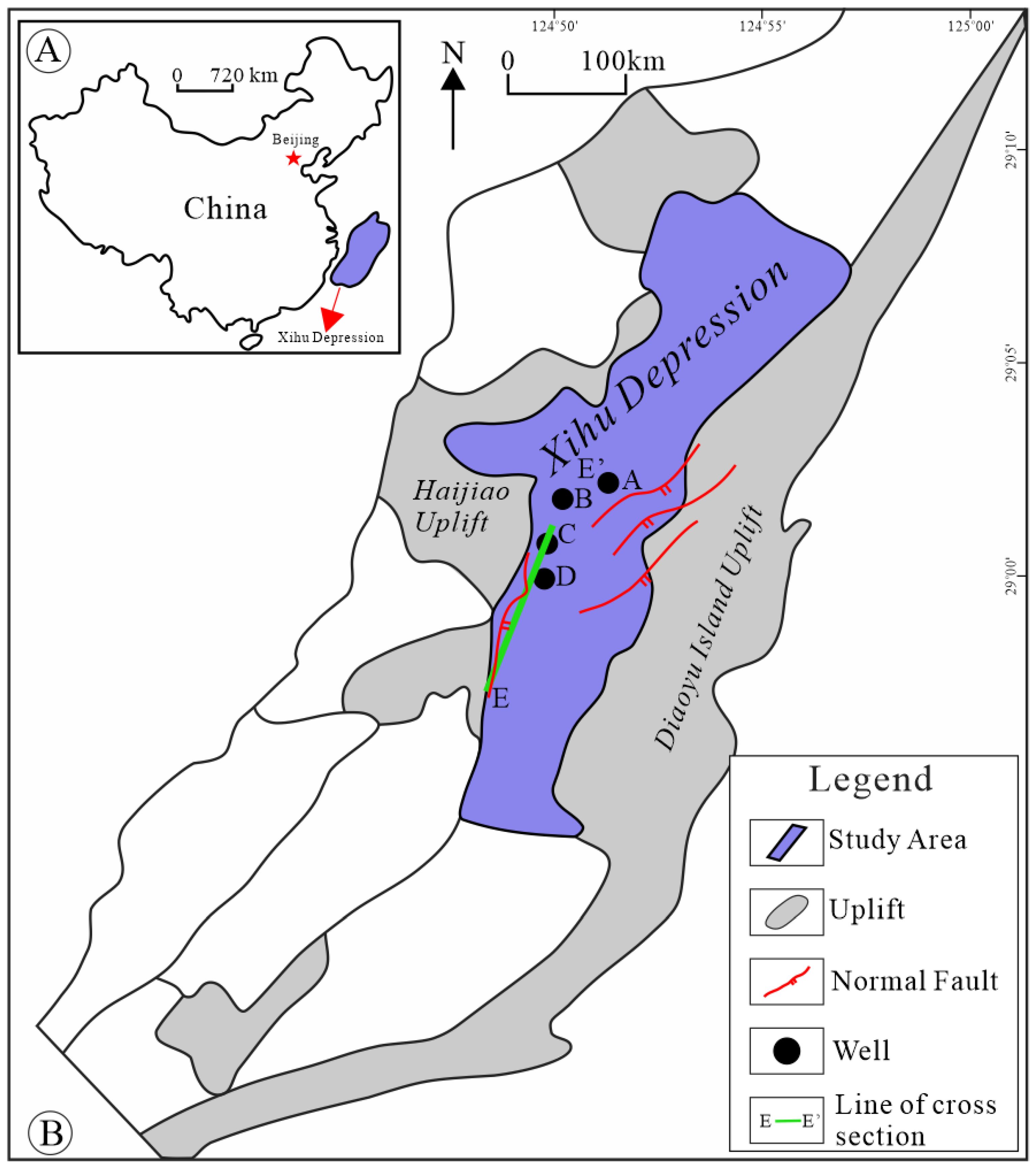
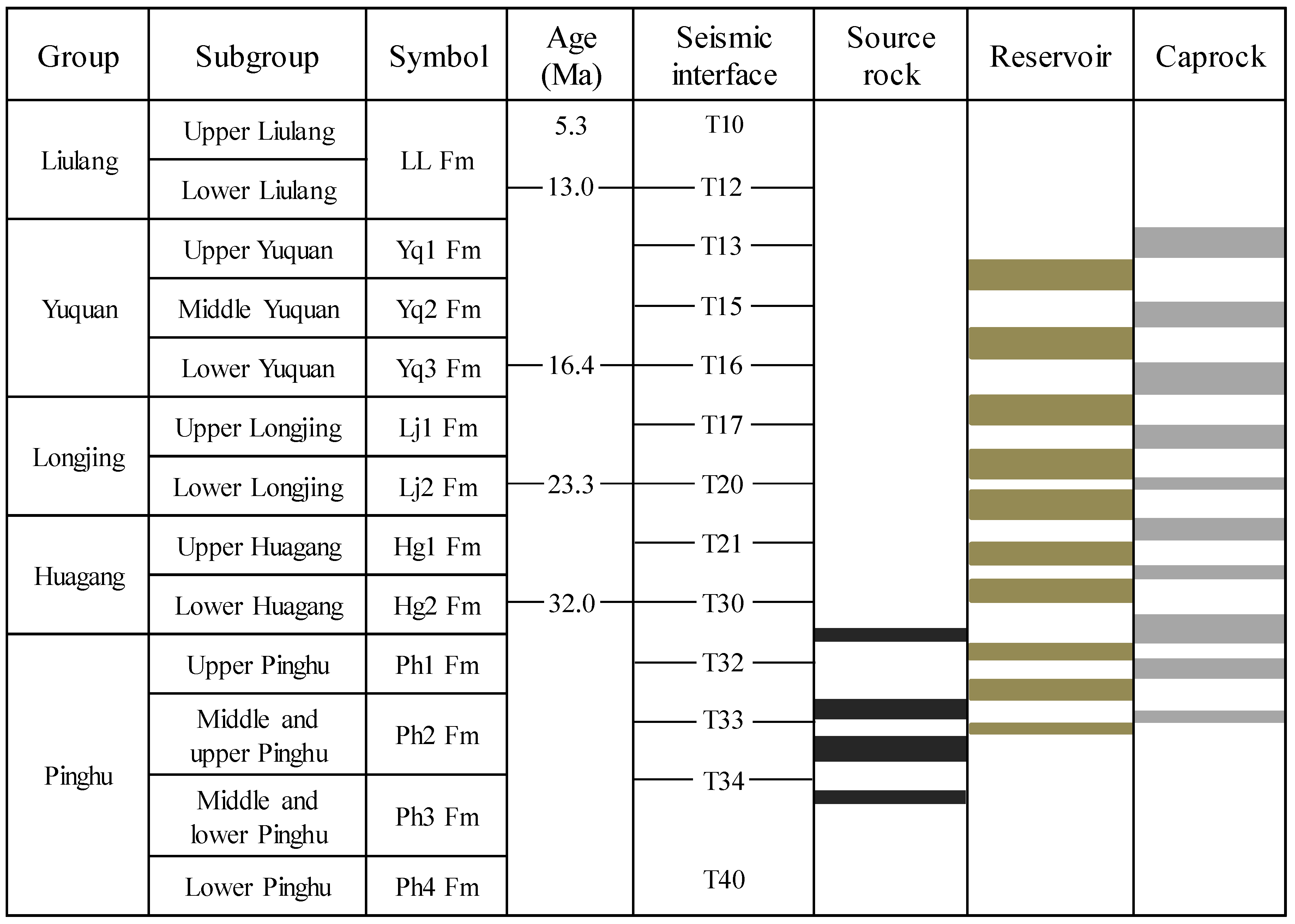

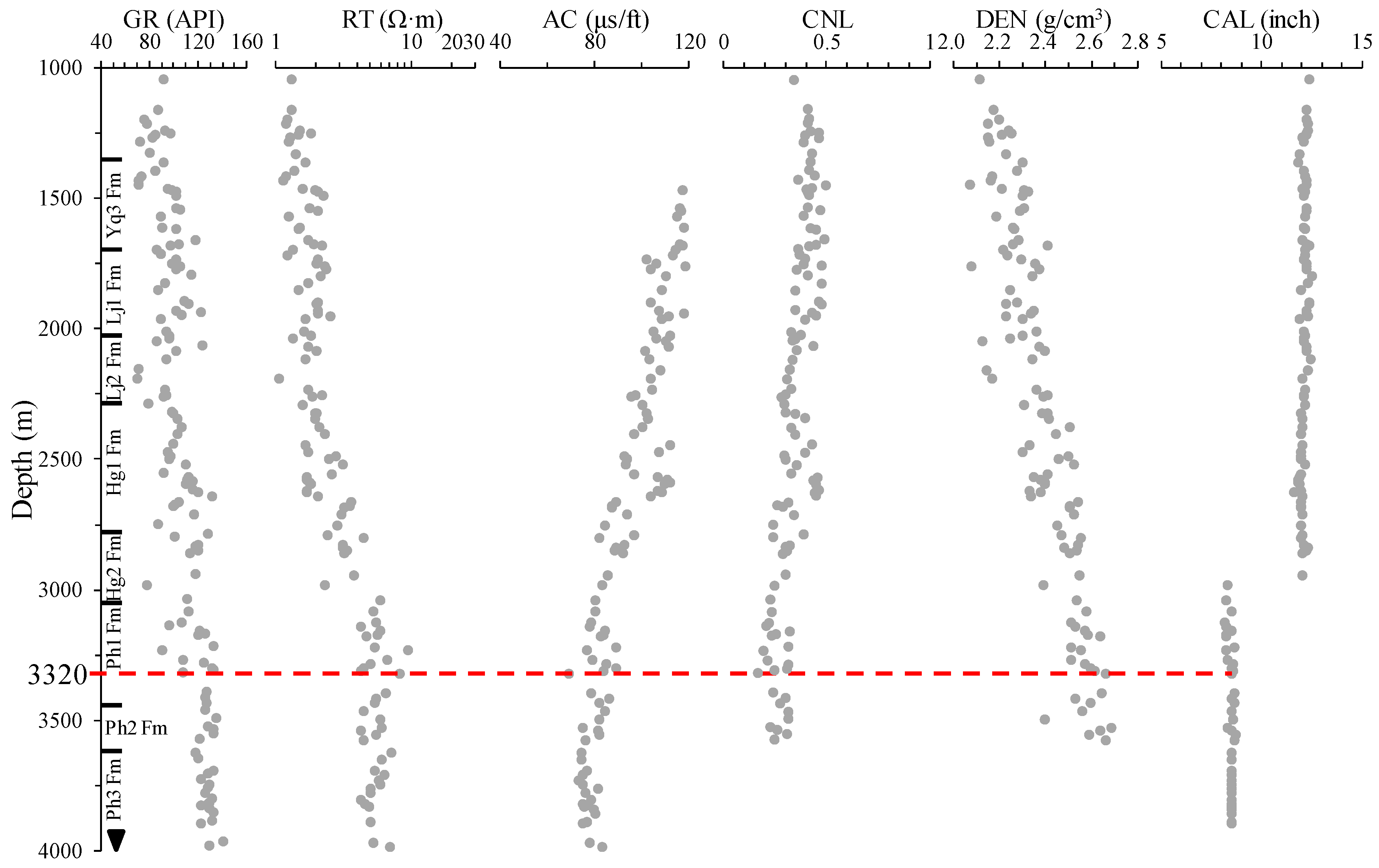

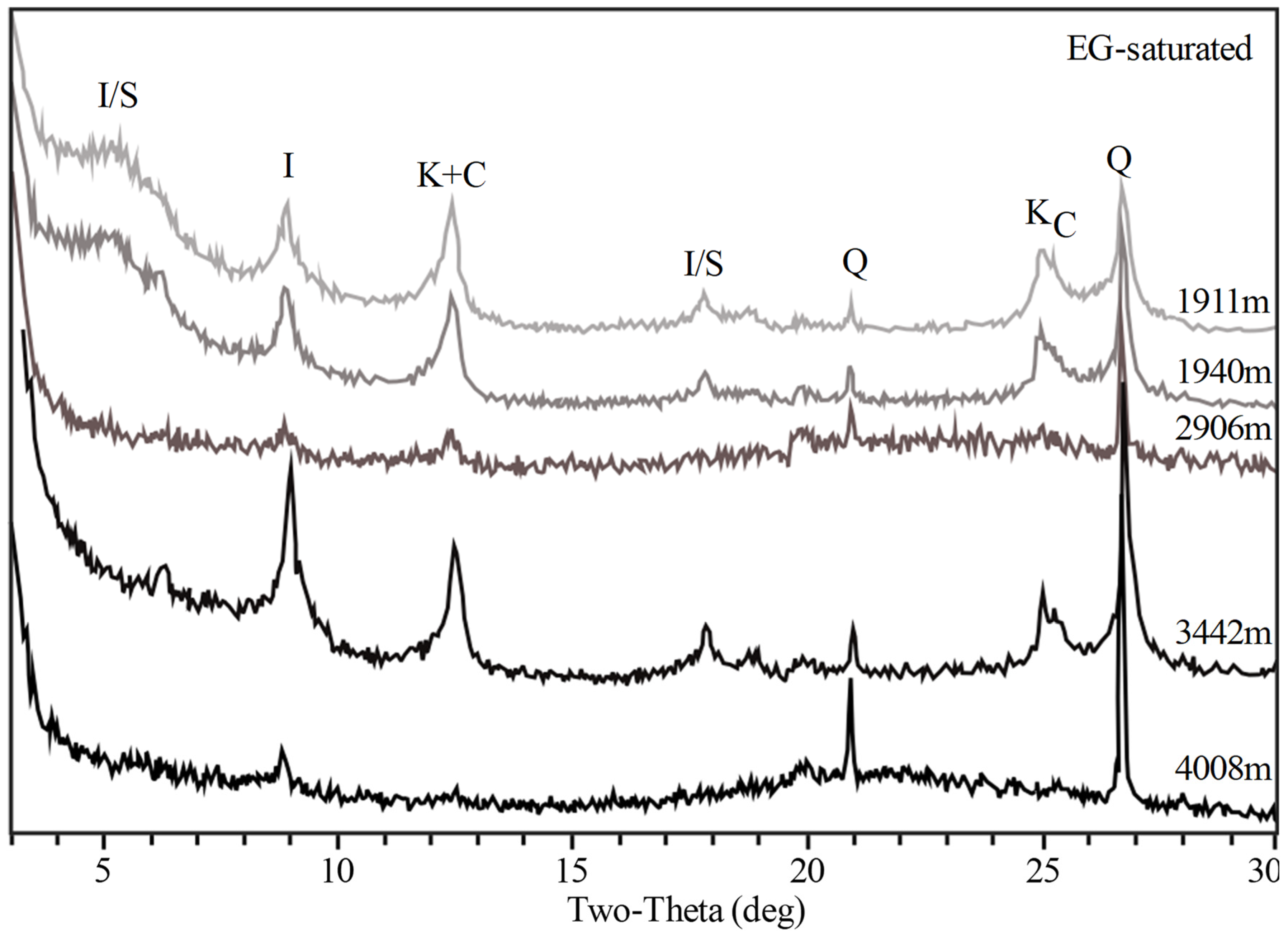


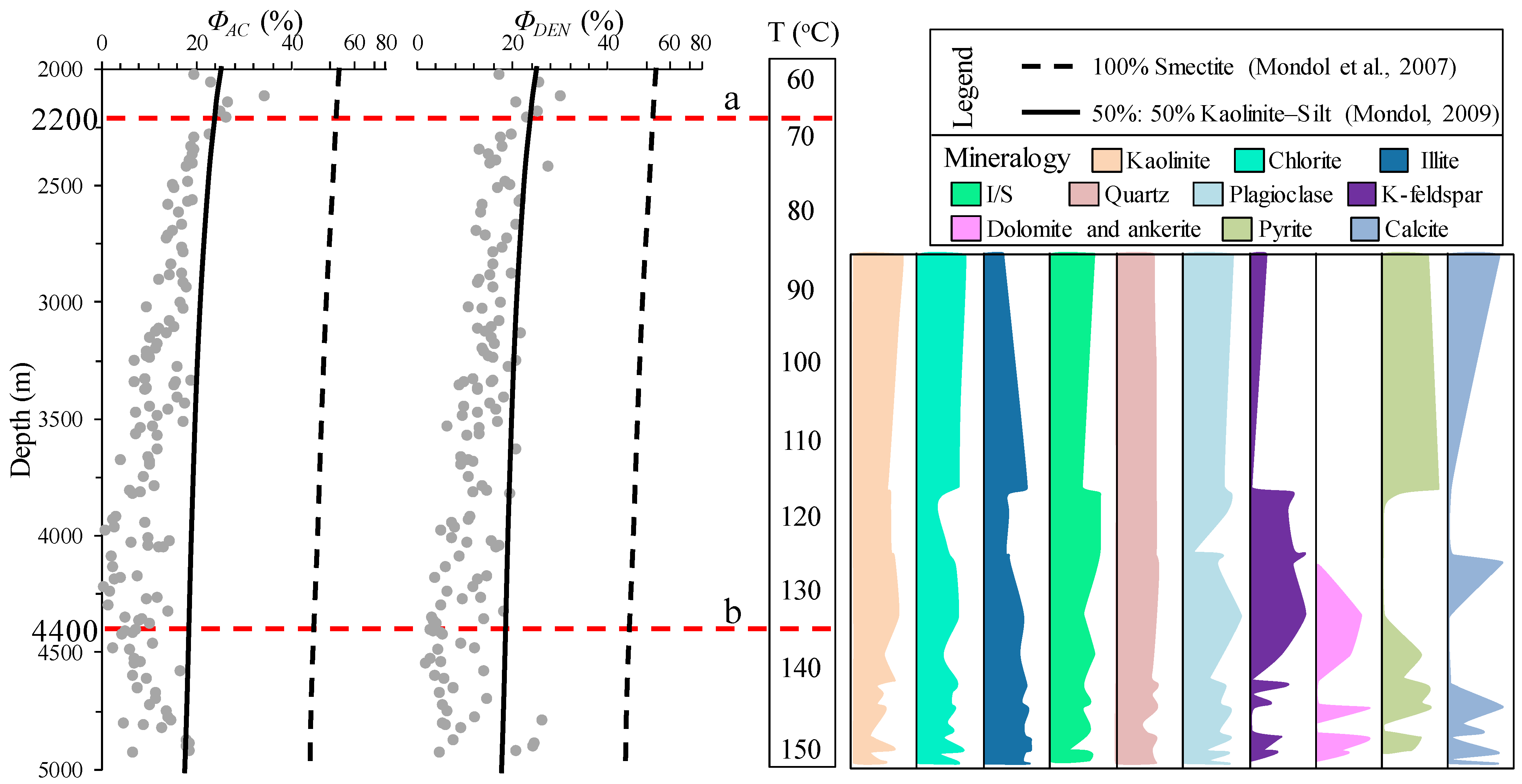




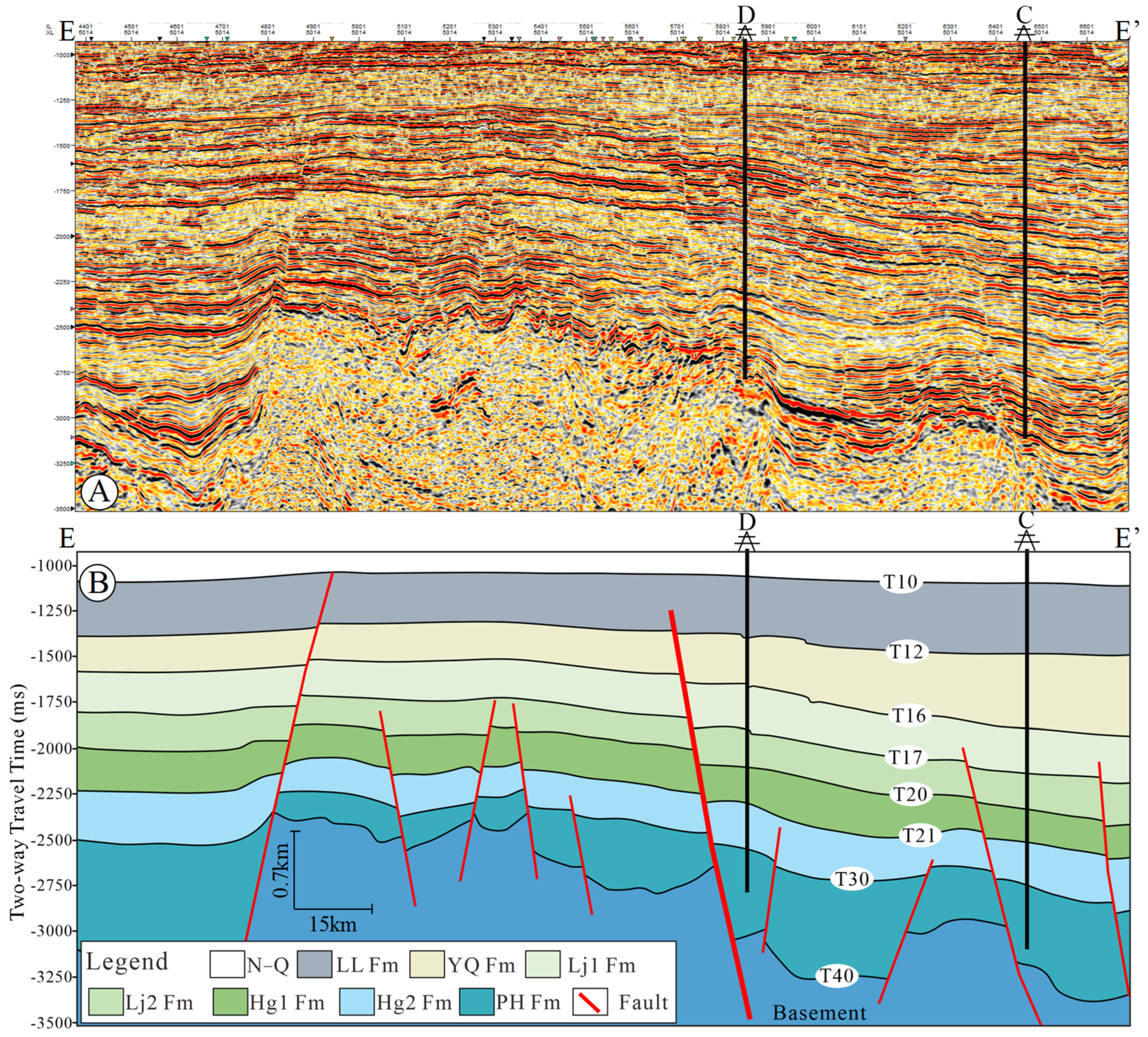
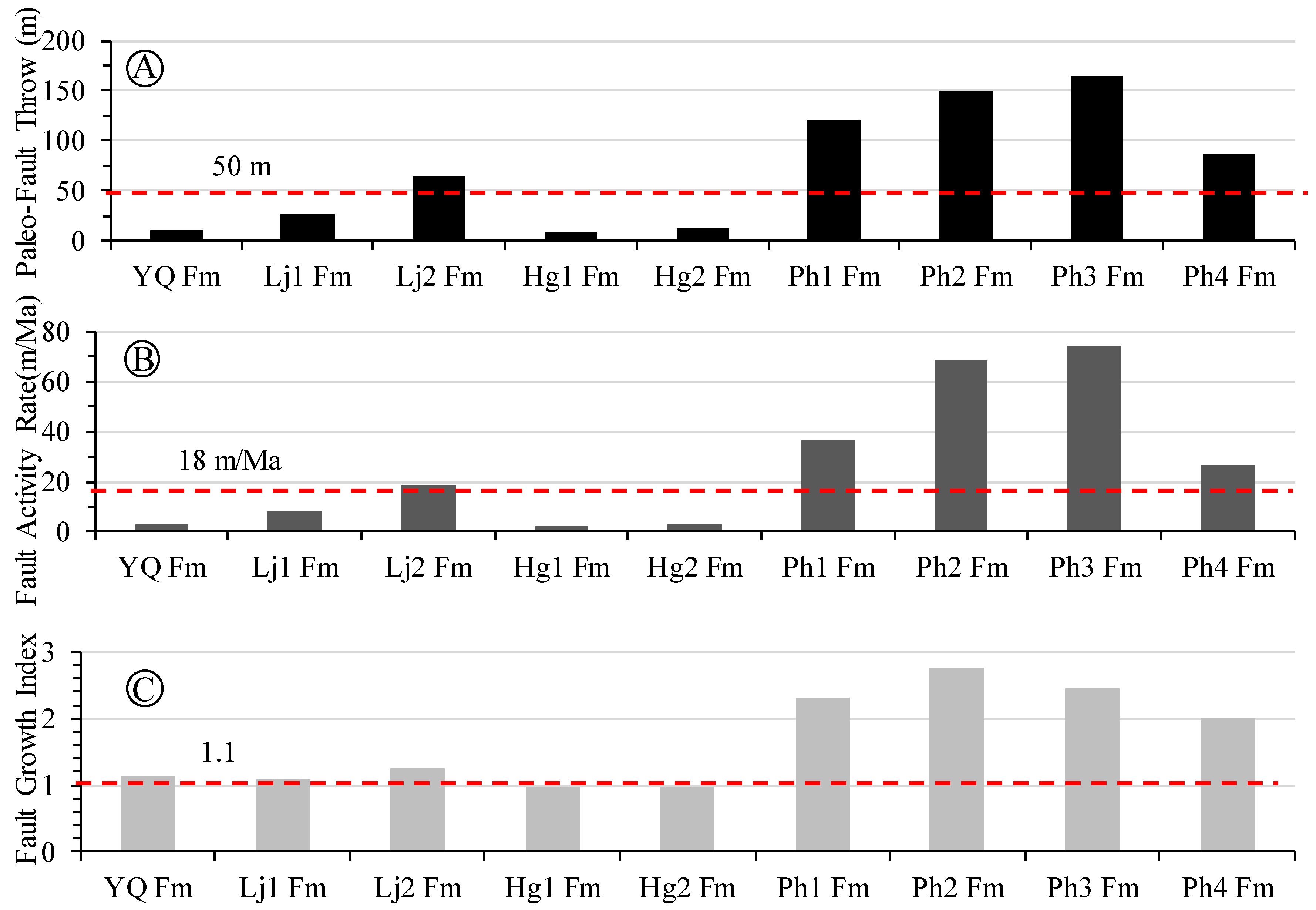
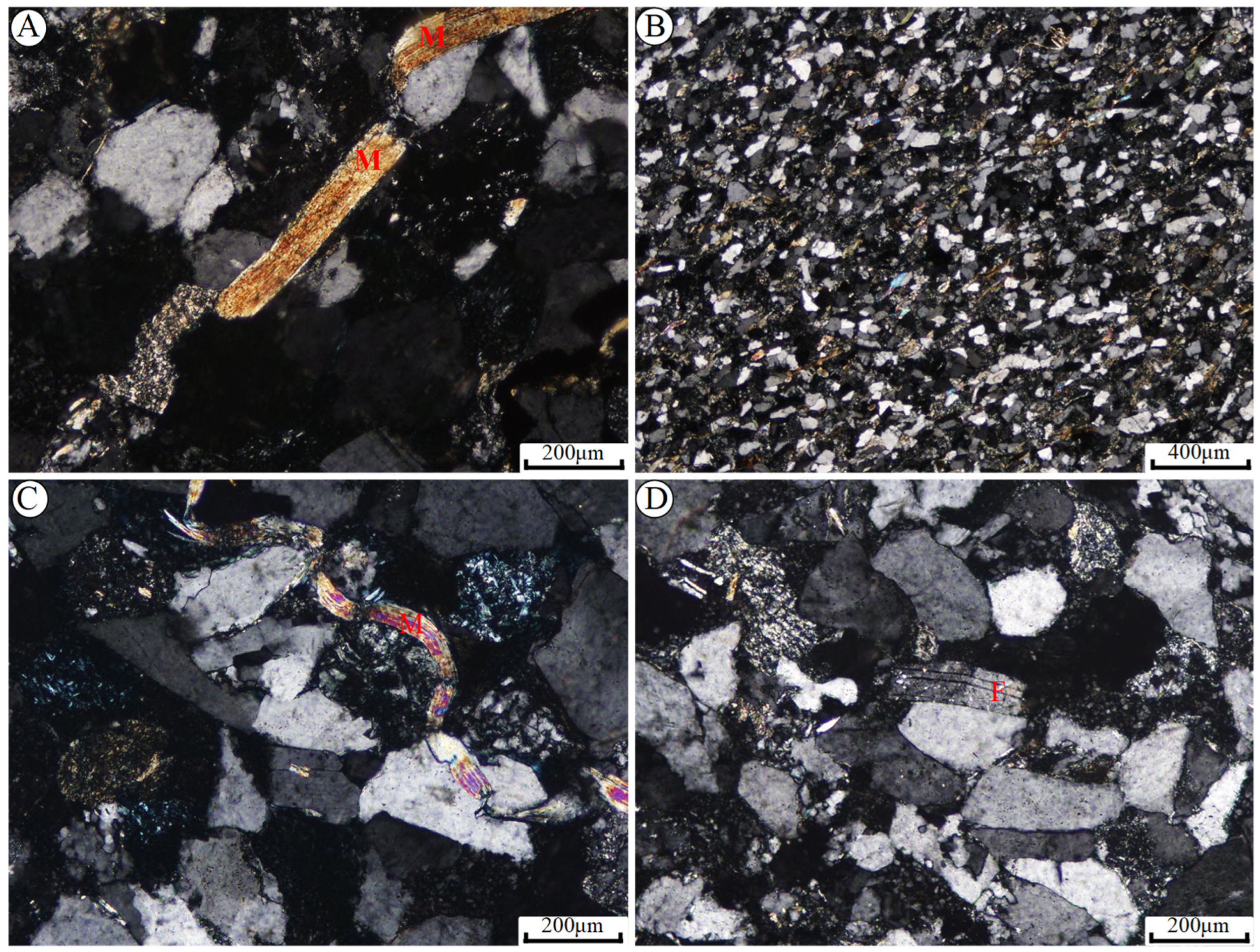

Disclaimer/Publisher’s Note: The statements, opinions and data contained in all publications are solely those of the individual author(s) and contributor(s) and not of MDPI and/or the editor(s). MDPI and/or the editor(s) disclaim responsibility for any injury to people or property resulting from any ideas, methods, instructions or products referred to in the content. |
© 2024 by the authors. Licensee MDPI, Basel, Switzerland. This article is an open access article distributed under the terms and conditions of the Creative Commons Attribution (CC BY) license (https://creativecommons.org/licenses/by/4.0/).
Share and Cite
Zhao, Z.; Zhao, J.; Zhao, H.; Wang, J.; Er, C.; Li, Z.; Wang, S. A Genetic Mechanism for Chemical Compaction in Mudstones: Case Study from the Xihu Depression, East China Sea Shelf Basin. Minerals 2024, 14, 413. https://doi.org/10.3390/min14040413
Zhao Z, Zhao J, Zhao H, Wang J, Er C, Li Z, Wang S. A Genetic Mechanism for Chemical Compaction in Mudstones: Case Study from the Xihu Depression, East China Sea Shelf Basin. Minerals. 2024; 14(4):413. https://doi.org/10.3390/min14040413
Chicago/Turabian StyleZhao, Zilong, Jingzhou Zhao, Hong Zhao, Jun Wang, Chuang Er, Zhe Li, and Shixiong Wang. 2024. "A Genetic Mechanism for Chemical Compaction in Mudstones: Case Study from the Xihu Depression, East China Sea Shelf Basin" Minerals 14, no. 4: 413. https://doi.org/10.3390/min14040413
APA StyleZhao, Z., Zhao, J., Zhao, H., Wang, J., Er, C., Li, Z., & Wang, S. (2024). A Genetic Mechanism for Chemical Compaction in Mudstones: Case Study from the Xihu Depression, East China Sea Shelf Basin. Minerals, 14(4), 413. https://doi.org/10.3390/min14040413







